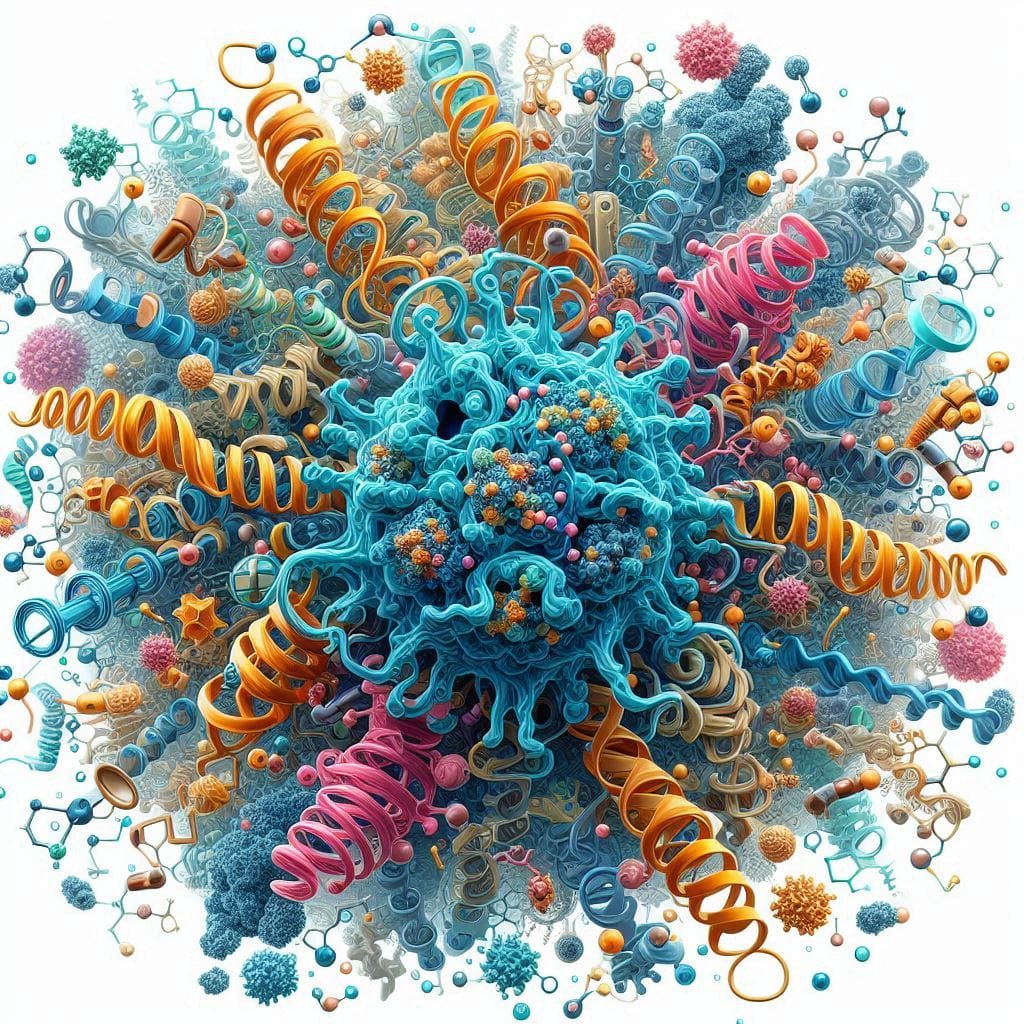
“25 kDa viral protein structure and role” The 25 kDa Viral Protein: Structure and Functional Insights
Viral proteins play pivotal roles in the life cycles of viruses, influencing their ability to infect host cells, replicate, and evade immune responses. Among these, proteins with a molecular weight of approximately 25 kilodaltons (kDa) have garnered significant attention due to their diverse functions across various viral families. This article delves into the structural characteristics and roles of 25 kDa viral proteins, offering actionable insights for researchers and enthusiasts.
Introduction to 25 kDa Viral Proteins “25 kDa viral protein structure and role”
The term “25 kDa viral protein” encompasses a range of proteins from different viruses that share a similar molecular weight. Despite this commonality, their structures and functions can vary widely, reflecting the adaptability and complexity of viral mechanisms.
Structural Characteristics “25 kDa viral protein structure and role”
Understanding the structure of a viral protein is crucial, as it provides insights into its function and potential as a therapeutic target.
Common Structural Motifs
Many 25 kDa viral proteins exhibit conserved structural motifs that are essential for their function:
- Nudix Hydrolase Domain: Found in proteins like the 25 kDa subunit of human cleavage factor Im (CF Im25), this domain is involved in hydrolyzing nucleoside diphosphate derivatives, playing a role in RNA processing. citeturn0search1
- Transmembrane Helices: Certain viral proteins possess transmembrane regions, facilitating their integration into host cell membranes and influencing processes like viral assembly and release.
Structural Variations Across Viruses “25 kDa viral protein structure and role”
While some structural features are conserved, variations exist:
- Vaccinia Virus VP8: This 25 kDa protein is a component of the virion core and is essential for forming transcriptionally competent viral particles. citeturn0search0
- Sheeppox Virus OPG138: A 25 kDa core protein that undergoes proteolytic processing during the transition from immature to mature virions, highlighting its role in viral maturation. citeturn0search2
Functional Roles “25 kDa viral protein structure and role”
The functions of 25 kDa viral proteins are as diverse as their structures, encompassing roles in replication, assembly, and immune evasion.
Viral Replication and Transcription
Some 25 kDa proteins are integral to the replication machinery:
- CF Im25: Involved in pre-mRNA processing, this protein aids in the cleavage and polyadenylation of pre-mRNA, a critical step in gene expression. citeturn0search1
Virion Assembly and Maturation
Proteins like VP8 and OPG138 are crucial for assembling and maturing viral particles:
- VP8: Essential for forming transcriptionally active vaccinia virions, indicating its role in assembling functional viral particles. citeturn0search0
- OPG138: Undergoes processing during virion maturation, suggesting a role in transitioning viruses to an infectious state. citeturn0search2
Modulation of Host Immune Response
Certain 25 kDa proteins assist viruses in evading host defenses:
- Nef Protein: A 27-35 kDa protein in HIV that downregulates immune receptors on host cells, aiding in immune evasion. citeturn0search9

Actionable Insights for Researchers “25 kDa viral protein structure and role”
For those studying 25 kDa viral proteins, the following strategies can enhance research outcomes:
1. Structural Analysis
Employ techniques such as X-ray crystallography and cryo-electron microscopy to elucidate protein structures. Detailed structural knowledge can inform drug design and therapeutic interventions.
“High-resolution structural data are invaluable for understanding protein function and developing targeted antiviral therapies.”
2. Functional Assays
Design experiments to assess the biological activities of these proteins:
- Enzymatic Activity: For proteins with hydrolase domains, measure substrate specificity and catalytic rates.
- Interaction Studies: Use co-immunoprecipitation and pull-down assays to identify host proteins that interact with the viral protein.
3. Therapeutic Targeting
Understanding the role of 25 kDa proteins can lead to novel treatments:
- Inhibitor Development: Design small molecules or peptides that specifically inhibit the protein’s function.
- Vaccine Design: Incorporate epitopes from these proteins into vaccine candidates to elicit robust immune responses.

Comparative Analysis of Notable 25 kDa Viral Proteins “25 kDa viral protein structure and role”
The table below summarizes key features of notable 25 kDa viral proteins:
| Protein | Virus | Function | Structural Features |
|---|---|---|---|
| VP8 | Vaccinia Virus | Virion core component; essential for forming transcriptionally competent particles | Conserved motifs critical for core assembly |
| OPG138 | Sheeppox Virus | Core protein; undergoes proteolytic processing during virion maturation | Structural elements facilitating maturation |
| CF Im25 | Human (Host Protein) | Involved in pre-mRNA processing; aids in cleavage and polyadenylation | Nudix hydrolase domain |
| Nef | HIV | Modulates host immune response; downregulates immune receptors | Myristoylated protein with multiple interaction domains |
Conclusion “25 kDa viral protein structure and role”
The 25 kDa viral proteins are integral to various stages of the viral life cycle, from replication to immune evasion. A comprehensive understanding of their structures and functions not only enriches basic virology knowledge but also paves the way for therapeutic advancements. Continued research in this domain holds promise for developing targeted antiviral strategies and improving public health outcomes.
Frequently Asked Questions (FAQ) “25 kDa viral protein structure and role”
**Q1: Why is the study of 25 kDa viral
Share this content:






